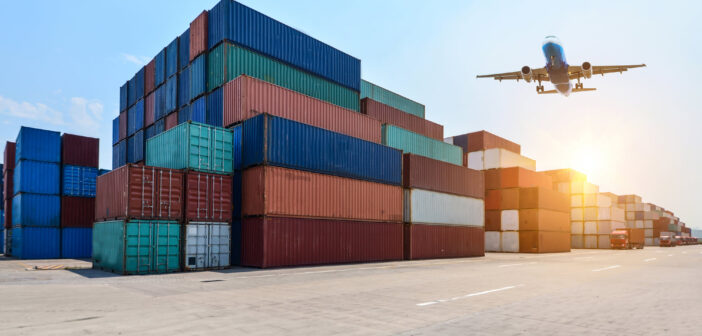Much before the outbreak of pandemic Coronavirus, the Indian real estate sector battling with the consistent slowdown was looking up to the turnaround catalyst. While the success of REIT had given it a glimmer of hope, the fund managers had their eyes set on a segment that has the potential to not just spread across the country but give a piggy ride to other segments as well, most notably to the housing. Track2Realty finds the warehousing & logistics to emerge as the mainstream real estate in the last few years.
The outbreak of Coronavirus has only strengthened the belief of the fund managers even more. The turnaround catalyst is none other than warehousing & logistics in post Covid world. In a consumption driven economy like India, the lockdown exposed the fact that this segment despite of its growth potential is yet under-supplied segment of real estate.
In a changed world today, the definition of what constitutes mainstream property has blurred. Hotel, office and retail, seen till recently as income producing asset class, are no more attractive to the investors. The office market that had been the focal point till Coronavirus has today clouds of uncertainty over it, with extended Work From Home a predominant reality for the next few years.
In contrast, logistics and warehouse spaces are increasingly gaining traction. In terms of the policy support also, the introduction of a national Goods & Services Tax in 2017 that replaced a host of state taxes, which had made establishing national logistics networks difficult, has encouraged the investors in this space. Today, large firms like GLP, ESR and Logos have invested heavily in establishing India operations. For example, GLP has joined hands with India’s largest logistics specialist Indospace alongside capital from Canadian group CPPIB.
There is a general belief that India’s logistics real estate sector will continue to grow due to e-commerce growth and changes in consumption habits. It is hence no surprise that big deals are getting done in the middle of a pandemic. At a time when the government focus has also shifted to encourage local manufacturing, as well as the world’s attempt to look at a “China Plus One” strategy to de-risk global supply chains, the investors of logistics & warehousing are looking forward to investment of lifetime.
Furthermore, with international business like Amazon looking seriously at India to take advantage of the world’s second largest population the demand for warehousing is a logical conclusion. India is spending 1.5 trillion dollars on infrastructure over the next five years. The logistics, industrial and manufacturing sector has a great opportunity to leverage.
The warehousing & logistics growth cycle
Demand far exceeds supply
Introduction of a national Goods & Services tax in 2017 that replaced a host of state taxes, which had made establishing national logistics networks difficult, has encouraged the investors in this space
The government focus has shifted to encourage local manufacturing
The world’s attempt to look at a “China Plus One” strategy to de-risk global supply chains, and the investors of logistics & warehousing are looking forward to investment of lifetime
Tier II & III cities more cost effective from investment standpoint
Consumption demand equally bullish in Tier II and III cities
Growth in logistics & warehousing to create more jobs in smaller towns
Chain effect on the economy to lead to growth of housing demand in smaller cities
Economists believe that the growth pattern of the country that has been limited to top 8 cities needs a relook. Logistics and warehousing has the potential to generate overall real estate demand in the Tier-II & III cities. It will also decongest the top cities since urban sprawling would lead to the real estate growth in Tier II & III cities.
JC Sharma, VC & MD of Sobha Limited agrees that developing infrastructure and setting up industries are the key to urban development which will ensure growth momentum in Tier II and Tier III cities. This is the time when government should step up investment spending. The government has created a National Infrastructure Pipeline, which has 6866 projects, collectively costing $1.7 trillion. These need to be actioned. Having a strong infrastructural base is critical for uniform and sustainable economic development in the country as lack of it has proven to be a bottleneck for growth.
“Good quality mobility, roads, rail network, electricity, connectivity with larger metros, and development of adequate social infrastructure will go a long way in establishing these industrial hubs within smaller cities. Growth of industries and real estate in these parts of the country will help iron out the lopsided model of economic development which is at present concentrated in and around few metro cities alone,” says Sharma.
Apurva Gupta, Chief Marketing Officer, Rivali Park, CCI believes that while India and the global economy continue to deal with the health and financial repercussions of the pandemic, India’s logistics and warehousing segment has emerged as an encouraging real estate avenue. One of the major trends observed in the post-COVID-19 scenario is the rise of Tier II and III cities as sunrise hubs of logistics and warehousing.
“A series of government initiatives like the improvement in ‘Ease of Doing Business Index’ along with the proposed National Logistics Policy and National E-commerce Policy is expected to lay the sector’s roadmap for advancement in these cities. The advantages in terms of low rentals, obtainability of manpower at an abridged cost, and high vacancy levels will drive this growth alongside lending a positive thrush towards creating more employment opportunities in these areas. This has indirectly spurred residential housing which is expected to rise in years to come,” says Gupta.
Cities like Vapi, Surat, Lucknow, Patna, Coimbatore, Ludhiana, Guwahati, Siliguri and Bhubaneshwar are already beholding a surged warehousing demand. The limited movement due to the nationwide lockdown has underlined the vitality of in-city warehousing, with Tier II and III belts developing as chosen investment destinations.
The upcoming Delhi Mumbai Industrial Corridor (DMIC) and many other industrial corridors promise to take the logistics & warehousing growth story to many smaller connecting cities. Developing capacities to manufacture goods within the country will have many ripple effects. This will give fillip to the construction activity, jobs to construction workers and will push demand for necessary goods and services on the side. The Tier II and Tier III cities have countersigned speedy infrastructure advancement and are also evolving as new employment hubs. Investment in logistics & warehousing hence has an early mover advantage today. Last, but not the least, is its backward and forward linkage with the overall demand and growth of other segment of real estate.
Ravi Sinha
@ravitrack2media
Track2Realty is an independent media group managed by a consortium of journalists. Starting as the first e-newspaper in the Indian real estate sector in 2011, the group has today evolved as a think-tank on the sector with specialized research reports and rating & ranking. We are editorially independent and free from commercial bias and/or influenced by investors or shareholders. Our editorial team has no clash of interest in practicing high quality journalism that is free, frank & fearless.
Subscribe our YouTube Channel @ https://bit.ly/2tDugGl





